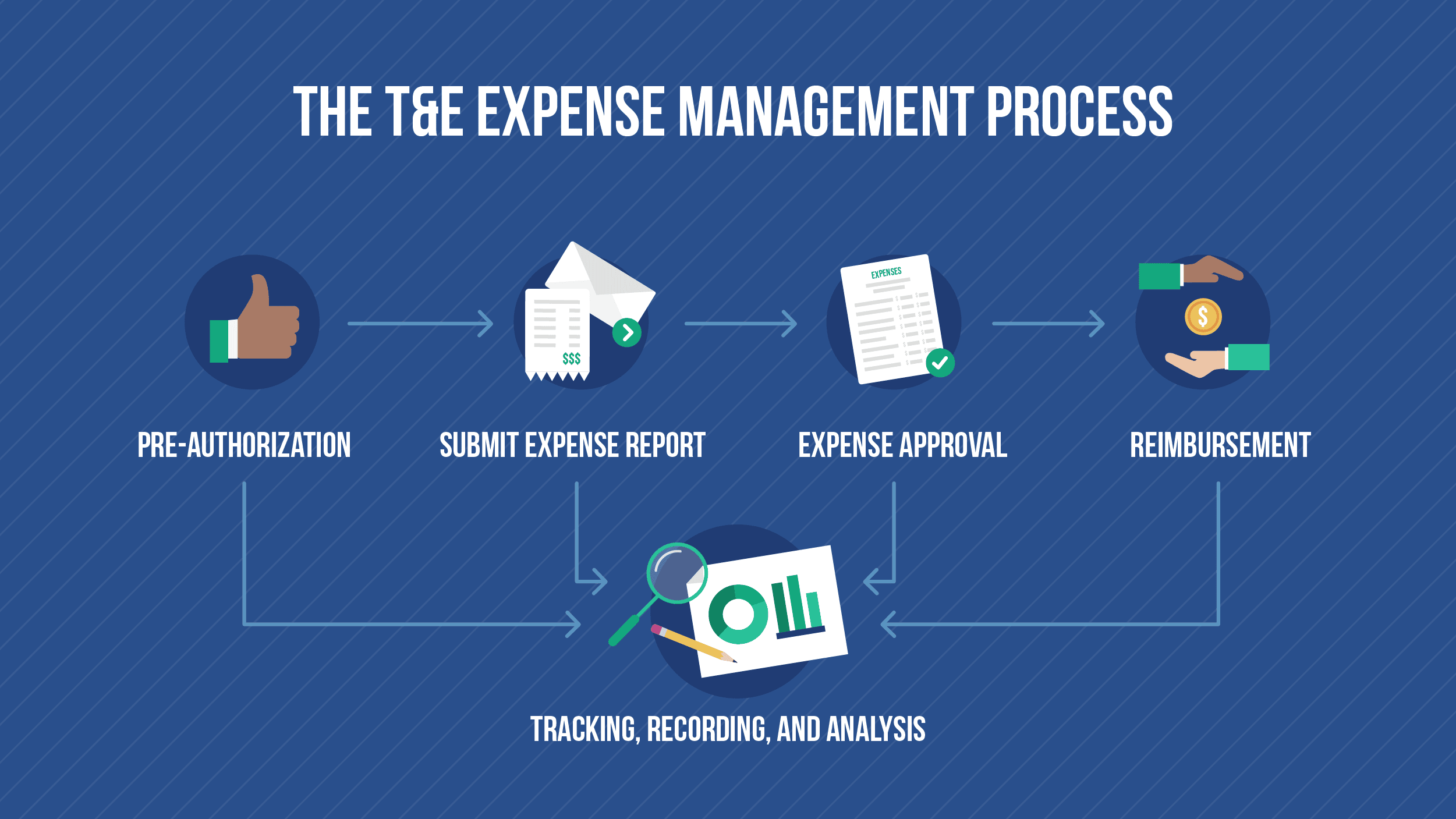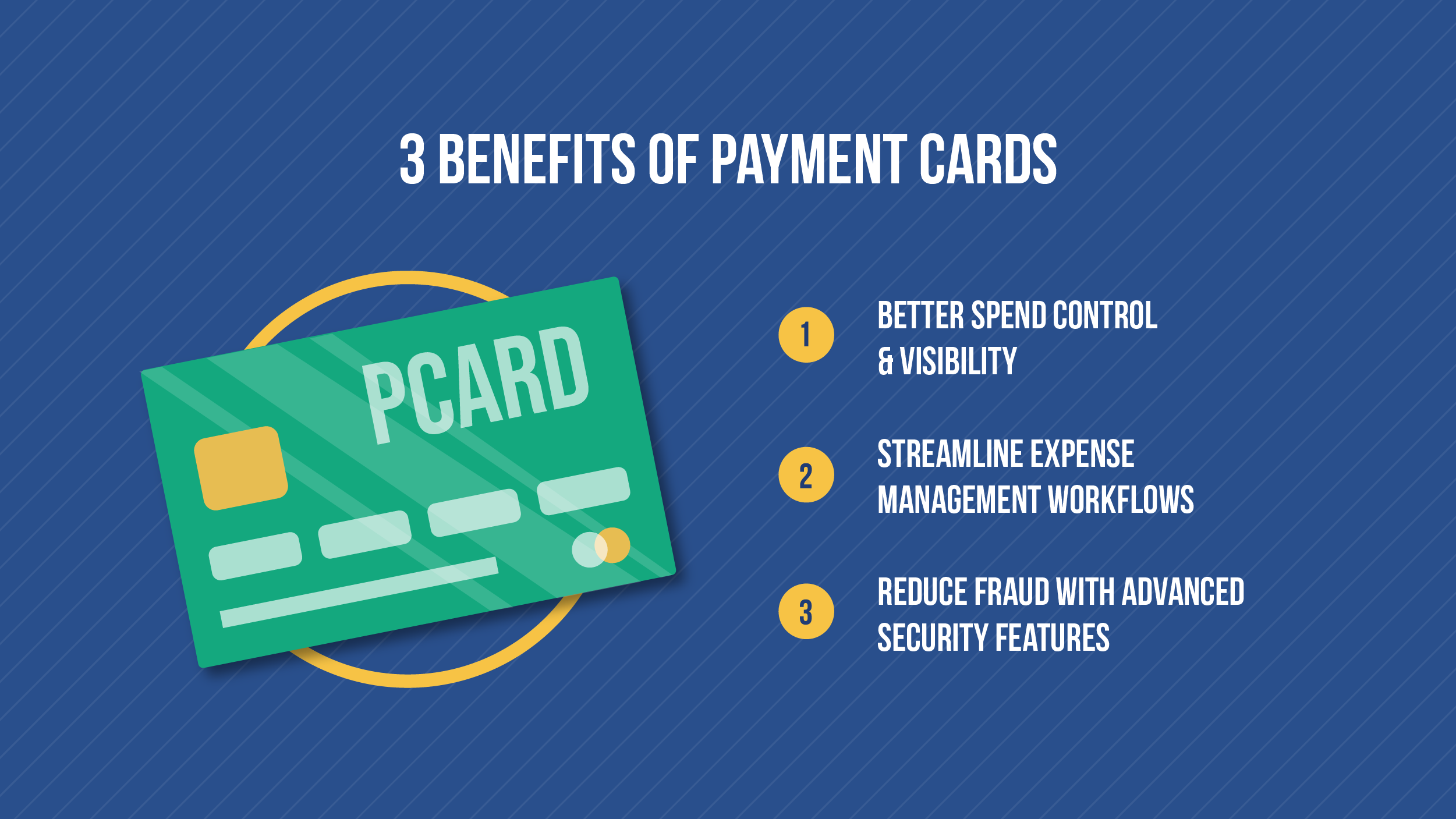How to Take Control of T&E Expenses

Travel and Entertainment expenses (T&E) are the costs incurred when an employee travels for business purposes or entertains a client. Traditionally, T&E expenses were associated with business travel and included transportation, meals, accommodation, and entertainment. In the post-COVID-19 world, T&E expenses increasingly include costs incurred by employees working remotely.
Typically, employees pay for their expenses directly, either out of pocket or using a company credit card or payment card. For most companies, T&E costs make up a significant portion of their business expenses, so it’s crucial to stay on top of them. This guide will help you understand T&E expenses and the fundamentals of T&E management, the challenges your business will face, and how expense management automation can give your business a competitive edge.
What Are T&E Expenses?
T&E expenses include business-related expenses commonly associated with travel and, more recently, with employees working remotely. Here are some of the major categories of expenses:
Business Travel & Mileage
Corporate travel is the cost of travel from an employee’s home to their business destination. These expenses generally include air, rail, or water transportation, or, if the employee uses their vehicle to travel, reimbursement of their vehicle expenses or a mileage allowance. Travel expenses also include costs for parking and bridge or highway tolls.
Local Ground Transportation
Local ground transportation includes transit, taxis, shuttles, limousines, ride-sharing services, and other local means of transportation. These costs don’t usually include commuting to and from the office.
Couriers and Shipping
Courier and shipping costs include the costs of shipping baggage, samples, trade show assets, or other material needed on the business trip.
Meals and Accommodation
Meals and accommodation include allowances for meals, hotel or other accommodations, and incidental expenses such as tips or room service. The IRS provides a useful guideline for acceptable per diem allowances for meals and lodging rates by state.
Business Communications
Business communications expenses include roaming, SIM rental, videoconferencing, business calls, faxes, and internet access.
Tips and Gratuities
Tips and gratuities to service providers can be hard to track because they are often paid in cash and may not appear on receipts or corporate card statements.
Incidental and Other Expenses
Incidental and other expenses include purchases of goods and services made while employees are on the road. These costs include laundry, equipment rentals, professional fees, personal items, stationery, and business supplies.
Entertainment and Business Gifts
Entertainment and business gifts include any costs incurred while entertaining clients or others. These costs also include sports and cultural events, meals, and other forms of entertainment.
Home Office Supplies and Services
Home office expenses have risen in the wake of the COVID-19 pandemic. These expenses include costs to set up a home office (video conferencing equipment, chairs, computers and devices, internet and communications access) and meals and other incidentals. Note that because these costs include purchasing physical assets that may remain in employees’ homes, you should ensure that you track these assets after purchase.
T&E Expenses and Taxes
In most jurisdictions, T&E expenses are tax-deductible. In the US, the IRS provides guidelines on deductible expenses. If your business is outside the US, you can check with your tax advisor or government revenue agency to see which rules apply.
Setting Expense Categories for Your Business
These categories only serve as guidelines for which T&E expenses you should cover in your expense policy. You will need to expand on each category to set specific policies and rules for expenses. For example, for air travel, you may want to restrict employee travel to economy class or specific airlines/routes.
You can follow some best practices while building your expense policy and management processes to ensure you effectively manage expenses and control costs.
Best Practices: Start with a Good T&E Expense Policy
Your first step to effectively managing T&E expenses is to have a good expense policy. Travel expense management boils down to clarity, efficiency, and transparency. Clear expense policies and procedures ensure that employees know what expenses are allowed, how to prepare and submit expense reports, and how and when they will be reimbursed.
Efficient processes ensure that expenses are processed promptly with minimal errors. And transparency means that your CFO and Accounts Payable (AP) team have visibility into expense data at every step so they can detect and mitigate fraud and errors and understand where your business is spending money on travel and entertainment.
Your travel policy is the foundation of your expense management process. It sets the rules on permitted types of expenses, what spending limits apply, how expense reports should be prepared and submitted, what approvals are required, and the process for expense reimbursement. Here are a few pointers on building an effective policy for your business.
Make Your Policy Clear and Easy to Follow
Employees are more likely to follow a T&E policy that is easy to understand. Work with HR and managers to ensure the policy is clear and unambiguous. For example, your booking accommodations policy should specify what hotel class and type of room are permitted, rules around room service, and if employees should use a preferred hotel chain.
Set Specific Criteria for Expense Approvals
Set specific rules for how and when expenses should be approved or rejected. You can use criteria such as spending limits on meals or accommodations, size restrictions on rental cars, etc. Include the reasons for the criteria. If you restrict the mileage allowance for employee vehicles, explain that the IRS sets the mileage rate.
Explain How to Book and Pay for Travel
Provide employees with clear instructions for travel booking, such as if they are required to use a preferred travel agency or booking site. If you allow employees to book their own travel, make sure you include limits on what they can spend. You should also specify whether travel needs to be pre-approved before booking. Provide details on how employees should pay for travel, whether through a corporate card or their personal credit card.
Give Clear Instructions on How to Track and Report Expenses
Explain the process for tracking expenses while traveling, submitting expense reports, and getting approval. Do employees need to track their actual expenses, or can they claim per-diem amounts for things like meals? Are employees required to provide copies of receipts?
Update Your T&E Expense Policy Regularly
Review and update your expense policy every year to ensure it’s up-to-date. Analyze your expense data to understand your spending patterns and identify areas where you could improve efficiency or save money by changing your policy. For example, if employees frequently travel to a particular city, you could research hotels in that city to see if you can negotiate a lower rate at a specific hotel or chain. Then you could change your expense policy to require employees to use that hotel when they book travel.
Define Clear and Efficient Workflows
Design your expense reporting workflows to show the route a receipt takes from when the employee submits the expense report to when the expense is reimbursed to the employee or paid to your corporate card or payment card. Include who is responsible for what activity at each step. Building clear workflows will make optimizing your expense management processes much easier while your company grows and your expenses become more complex.
With a good T&E expense policy, you can create and implement an efficient expense management process to handle your employee expenses.
Build an Efficient T&E Expense Management Process

For most businesses, the basic T&E process follows five steps. You can modify these steps to suit your company’s needs.
Step 1: Expense Pre-Authorization
Some businesses require employees to obtain pre-authorization for certain expenses such as air travel. When an employee plans to incur a T&E expense, they or their manager checks the expense policy to verify the criteria needed for the expense to be approved. Sometimes, the employee or approver may send the pre-authorization request to HR or AP for approval.
If the expense is allowable, the approver will pre-authorize the expense, and the employee will purchase the goods or services. If the expense is not allowed, the employee will either change the expense to meet the criteria or not incur the expense.
Once the expense has been incurred, the employee will prepare and submit the expense report.
Step 2: Expense Report Submission
The employee submits an expense report after incurring the expense. The report can be a paper or online form and usually includes the paper receipts or copies of the receipts. Your expense policy should dictate when employees must file expenses. Expense automation platforms can also include mobile apps that can scan and enter receipts in real-time as the employee travels, eliminating the need for a formal expense report.
When the employee completes the expense report, they send it to their manager or AP for approval.
Step 3: Approval of Expenses
The approver receives the T&E expense report, reviews it against the expense policy, and approves or denies the expenses. The expense policy dictates the handling of approved or denied expense reports. In general, the approver forwards approved reports to accounting or accounts payable for reimbursement or payment and returns denied reports to the employee.
Step 4: Reimbursement or Payment
Once the report has been approved and forwarded to the accounts payable or the finance team, the team will pay out the expenses.
- If the employee incurred out-of-pocket expenses, the cost will be reimbursed by direct payment or through the worker’s paycheck.
- If the employee used a corporate card or payment card, AP will pay the card issuer directly.
Your reimbursement policy should tell employees when they should see their reimbursement after the expense report is approved.
Step 5: Expense Tracking, Recording, and Analysis
Although we’re calling this a step, AP teams can track, record, and analyze expenses at any stage of the expense management process to capture, categorize, and record expense data in the company’s accounting system. This makes reconciling expenses to budgets, preparing financial statements, calculating tax deductions, and filing tax returns easier.
Recording and categorizing expenses helps your business prepare for audits and analyze expenditures. Analysis can detect fraud or errors, identify spending trends or inefficiencies, and allow forecasting of future expenses so your company can anticipate and plan for them.
Automated expense management software can track, record, categorize, and analyze expenses in real-time to provide accurate and timely expense data and reports.
Armed with a good expense policy and an efficient expense management process, you’re ready to track and take control of your expenses. However, there are still some challenges that your business can face when managing T&E expenses successfully.
Challenges of Expense Management
A good expense policy and management process will facilitate the efficient processing of T&E expenses. However, your business may still face significant challenges when it comes to T&E spend management. Here are a few ways things can go wrong:
Reviewing and Approving Expense Reports Takes Forever
Reviewing the expense policy and tracking the procedures and rules for individual expenses can be very time-consuming for approvers, especially if your business uses a manual review and approval process.
In addition, finance and AP teams may need to enter and categorize expenses manually, which can add further delays. And the whole process starts over if something goes wrong, like a missed receipt or an error. Over time this cycle can tie up a lot of people and resources.
Paper Receipts Can Get Lost, Destroyed, or Disorganized
Receipts are used as proof of purchase for T&E expenses. Unfortunately, they are easily lost or destroyed during travel, or multiple receipts can be disorganized. This slows down the review and approval process and can lead to rejected expense reports, again tying up people’s time and resources.
Little to No Insights into Expenditures
Your business needs to know how much money it is spending and where it is spending it. Visibility into expenditures is vital for fraud protection, preventing errors, and identifying spending trends. However, if your expense management process is dependent on manual processes and expense data is not being categorized and analyzed properly, you won’t be able to get insights into your expenditures.
Delayed Reimbursement and Payments
Slow and error-prone manual expense management processes can lead to delays in expense reimbursements and payments to corporate card issuers. This can cause frustrated employees and late payment charges.
Expense Fraud or Errors
Fraudsters exploit loopholes and weaknesses in expense management processes to steal money from businesses. Those same weaknesses can result in missed errors as well. Add inaccurate and outdated expense data, and your company could be vulnerable.
Most of these challenges stem from inefficient manual processes to process expense reports. Replacing these processes with an automated expense management system would streamline your expense management and save time and money and provide you with real-time tracking and reporting of expense data.
The Benefits of Automating T&E Expense Management
Manual T&E expense management can be slow and inefficient, leaving your business vulnerable to expense fraud and errors. Automating your expense processes can not only streamline your processes and save you time and money but also have significant benefits for your business.
Speed Up Expense Reviews and Approvals
You can set up your expense policy in your expense management software so that the platform automatically reviews expenses during the approval process. Approvers can see at a glance which expenses are allowed and approve the expense report in seconds instead of minutes.
Capture and Track Receipts and Documents
Expense management platforms equipped with optical character recognition (OCR) capabilities can scan and digitize receipts, invoices, itineraries, and other documents. Many solutions also include mobile apps that let employees scan receipts on the fly. Receipt capture reduces lost and destroyed receipts and makes it much easier to store and track documents in your expense management process.
Expense Insights and Analytics
Many expense management solutions include deep analytics capabilities to let CFOs and AP teams get insights into your company’s expenditures. Tools equipped with dashboards can present this information visually so you can review your expenses at a glance. Greater insight into your expenses lets you identify areas where you can save costs and create forecasts that you can use to set future expense budgets.
Expedite Reimbursements and Payments
Automated expense management tools can integrate with your accounting and payroll systems. This lets you expedite employee reimbursements and makes it easier to reconcile your expense accounts and pay corporate or payment card issuers. Automated payment card systems can also help you close your books faster by providing all your purchase details in a dashboard or report.
Reduce Expense Fraud and Errors
Expense management solutions can track and monitor transactions in real-time to help detect and mitigate fraud and errors. Some tools have fraud detection capabilities that can identify and flag expenses or expense patterns often associated with fraudulent transactions. Payment card solutions go one step further in eliminating fraud and errors because you can set spending limits and criteria and monitor transactions as they occur.
Automated T&E expense management platforms address the challenges of manual expense management and make your payment management processes more efficient, secure, and transparent. You can go one step further and gain even more control over your T&E expenses by considering an automated payment card solution. Some evolutionary payment card solutions, such as Stampli Card, incorporate AI and machine learning technology to give you exceptional visibility and control over your expenses.
Use Payment Cards to Get On Top of T&E Expenses

Payment card solutions combine the convenience of corporate credit cards with the capabilities of automated expense management solutions. Modern payment card solutions provide a high degree of control and insight over your T&E expenses.
Better Spend Control and Visibility
Payment card solutions like Stampli Card let you set spending limits for each cardholder and limit expenditures to specific categories to give you a high degree of control over employee T&E spending. Most card solutions can report a high level of transaction detail to let approvers review and approve expenses without needing to see receipts.
Streamline Expense Management Workflows
AP teams can view expenses as they happen and process transactions alongside invoices. Payment card platforms can integrate with your accounting, expense management, and ERP systems to sync expense data, eliminating data re-entry and errors and speeding up expense account reconciliations.
Reduce Fraud with Advanced Security Features
Payment card platforms prevent fraudulent activities such as receipt tampering, duplicate expenses, and unauthorized purchases. Many card platforms also offer security features to protect your business from theft or lost cards. And if you need to cancel a card for security reasons, you can provide a new card immediately.
The bottom line: If you want to get on top of your company’s T&E expenses, you should look to expense management automation solutions that support or integrate payment card services. Stampli Card is the only payment card solution that completely integrates with the most powerful AP automation platform.
Choose Stampli Card to Take Control of Your T&E Expenses
Stampli Card lets you control T&E expenses and manage employee spending simply and easily. It’s an excellent solution for businesses who want to turn AP into a strategic function.
Here’s how Stampli Card can benefit your business:
- Control expenses by setting specific budgets and capturing expenses at time of purchase
- Track expenses in real-time to manage and control spending
- Get in-depth insights and analysis of expenditures and make informed business decisions
- Suspend or cancel cards instantly to prevent misuse
Get on top of your T&E expenses today. Contact Stampli for a free demo.

